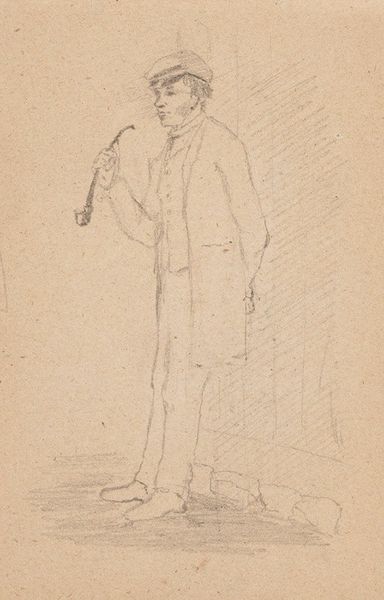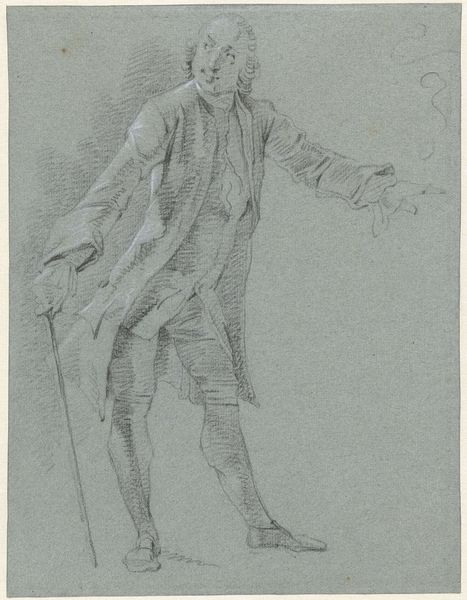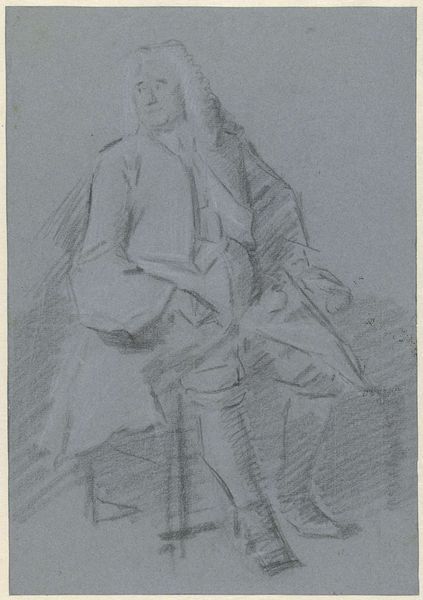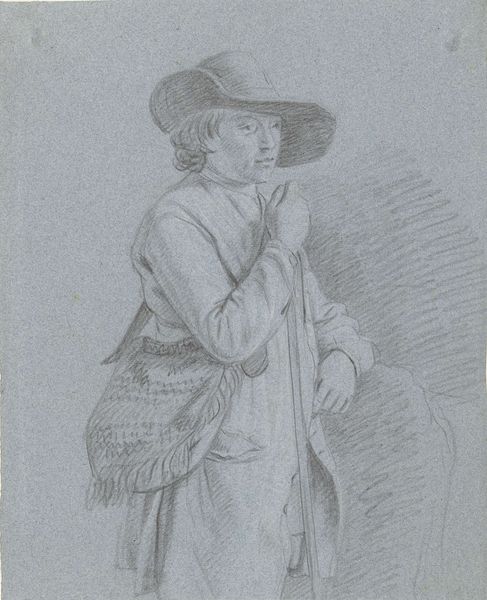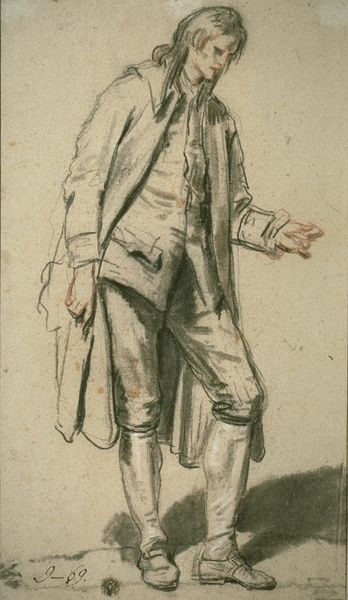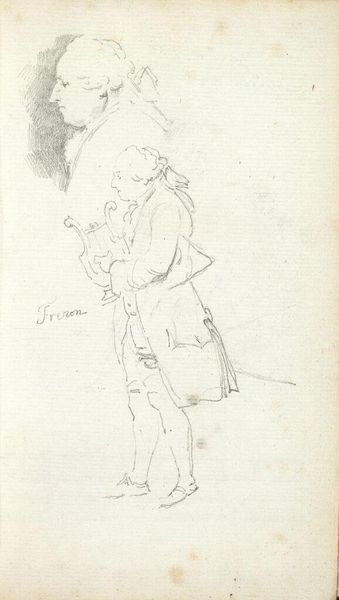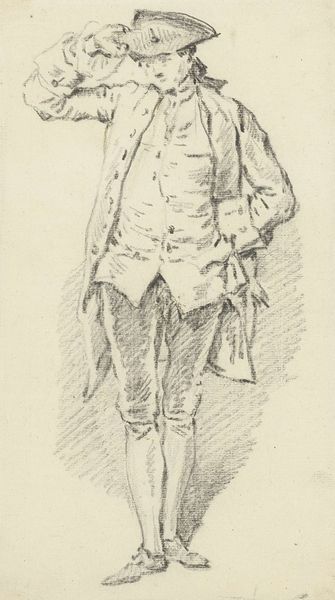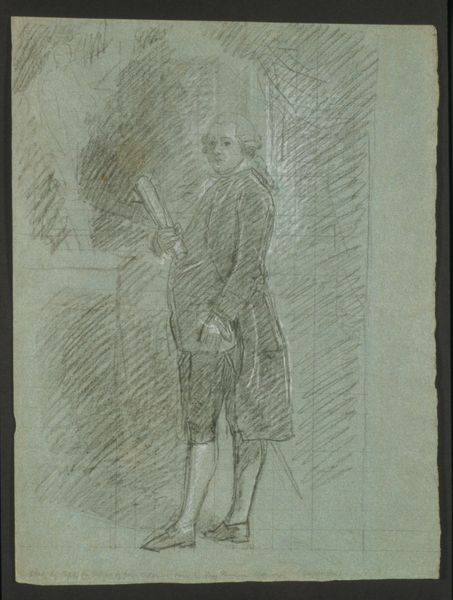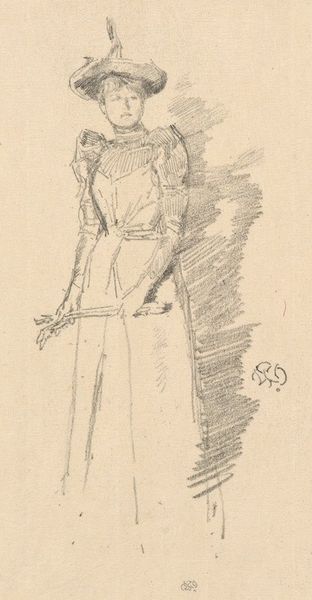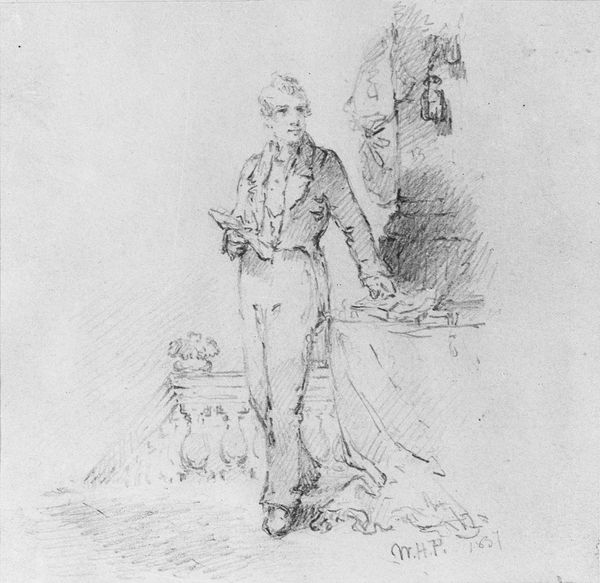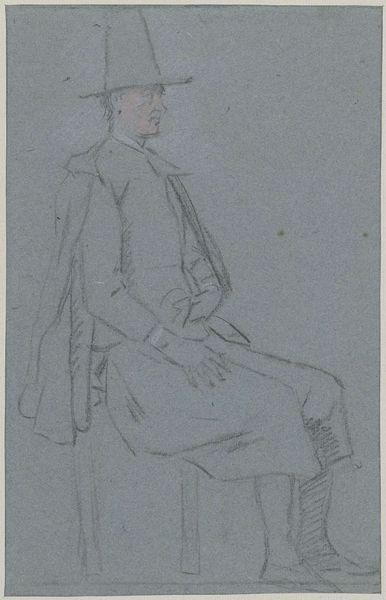
drawing, pencil
#
portrait
#
drawing
#
neoclacissism
#
pencil
#
academic-art
Copyright: Public Domain: Artvee
Editor: Here we have "Study for 'John Adams'," a pencil drawing done around 1783 by John Singleton Copley. It has such a raw, unfinished feel. The hatching gives the piece movement and dynamism. What do you see in this drawing? Curator: Immediately striking is the economical use of line. Copley prioritizes form and structure through this network of hatching, almost like an architect drafting a blueprint. Do you see how the parallel lines delineate planes, constructing a sense of three-dimensionality despite the monochrome palette? Editor: Yes, especially in the folds of his coat and the way the light seems to catch his face. It’s not about detail but more about capturing the essence. But isn't that sketchy quality almost counter to the precision usually associated with Neoclassicism? Curator: A valid observation. While the subject and its dignified pose certainly align with Neoclassical ideals, Copley’s emphasis on process over polished perfection signals a different type of engagement. The materiality of the pencil on paper is foregrounded; the hand of the artist is evident. Consider how the texture creates visual interest that almost subverts a traditional "smooth" formal portrait. The lack of blending directs one to contemplate the art-making. Editor: So it is less about a finished portrait and more about the artist grappling with form. Thank you, that perspective makes it easier to analyze the composition in the image. Curator: Indeed. Looking at this study reframes the intent. We now realize that each mark contains potential, and that meaning arises out of each stroke.
Comments
No comments
Be the first to comment and join the conversation on the ultimate creative platform.
